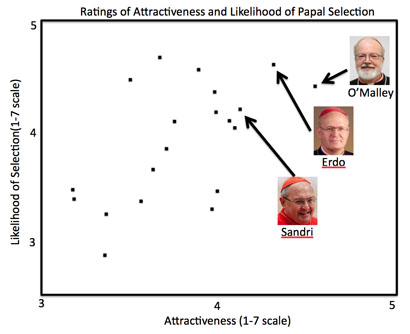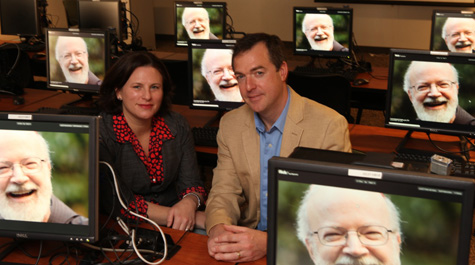Face the facts: W&M researchers predict selection of the next pope
Could you pick the next pope out of a lineup just by looking at his face? Two William & Mary professors say “yes.”
A study conducted by psychologists Jennifer A. Stevens and Peter M. Vishton predicts that American Cardinal Sean O’Malley, 69, the archbishop of Boston, will be selected as the next pope of the Roman Catholic Church when the conclave of cardinals meets in Rome later this month.
When humans make decisions about others, they may consider a wide range of information--experience, training, beliefs, etc.--Stevens noted. Prior research, however, makes it clear that people are also strongly, unconsciously influenced by other simple factors, such as the appearance of the face, she said.
“The pope is a figurehead with specific ethical and spiritual principles,” Stevens said. “But participants didn't seem to have a problem making the judgments we asked of them. No one wrote in stating that they couldn't possibly decide on who might be the next pope just by looking at the face.”
Stevens and Vishton started with a list of 20 leading candidates, based on names reported by various media sources. Photos of the candidates' faces were gathered from freely available online sources. Participants rated the attractiveness, health, and trustworthiness of each face, as well as judging the likelihood that each individual would be selected as the next pope.
O’Malley was rated highest on a composite scale of these ratings.
The study was based on an online survey of over 500 people. The participants in the six-minute survey were recruited via the Amazon Mechanical Turk system, which pays participants a small fee in return for their participation, in this case 20 cents each. The participants responded from all over the world. About half of the survey responses came from North America and half from Asia. About half of the data came from participants who reported that they were Christians, and about half reported that they were Hindus.
While these groups of participants were very different from one another in many ways, they were remarkably similar in terms of their ratings of the faces. The overall ranking of the cardinals was essentially the same across these two groups, the researchers said.
Prior research has suggested that characteristics of faces greatly influence human decisions about hiring, voting and assessment of others in general, Vishton noted. If these face-based processes influence the conclave of cardinals the same way that they influence others, it is likely that one of the top-rated candidates in the survey will be selected as the next pope.
Most of this data, however, have come from laboratory studies of simulated decision-making processes, he said.
“We wanted to test the limits of these theories in a real-world decision process with real faces. We also wanted to make a point of predicting some event before it actually occurred, rather than after the fact.”
The study found clear front-runners in each of the four ratings categories (see figure 1). The most attractive candidate, according to the survey respondents, was O’Malley. He was also rated as the most trustworthy. The leader in the health category was Cardinal Luis Tagle, 56, of the Philippines. Cardinal Angelo Scola, 72, of Italy scored highest on the stand-alone question of who is likely to be the next pope. But overall, O’Malley was rated highest on average, with Cardinal Peter Erdo, 61, of Hungary close behind. Also close behind was Argentinian Cardinal Leonardo Sandri, 70, who scored third overall, while not winning any particular category.
When asking people to rate the likelihood that an individual will be selected as the next pope, the ratings were most strongly correlated with ratings of attractiveness, Vishton said.
“It’s almost as if participants were rating the same thing twice, even though the two questions were very different. Of course, being charismatic and attractive may impact the performance of a pope in inspiring Catholics around the world, but it is surprising that the two are so strongly correlated.”
“If we were going to hedge our predictions, Erdo would be our next choice,” said Vishton. “He and O’Malley were nearly tied in our survey. Sandri was close behind in third, and Scola was judged the most likely to be named Pope. If none of these four is selected--O’Malley, Erdo, Sandri, or Scola--then perhaps face appearance doesn’t play as big a role in this selection process as in others.”
For Stevens, the experimental approach exposes human's intuitive and automatic biases.
"We make split-second judgments about a person based on how she or he looks all of the time,” she said. “The interesting part is that these decisions are often the same as those made after we've gathered lots of information about a person.”
 Skip to main content
Skip to main content

